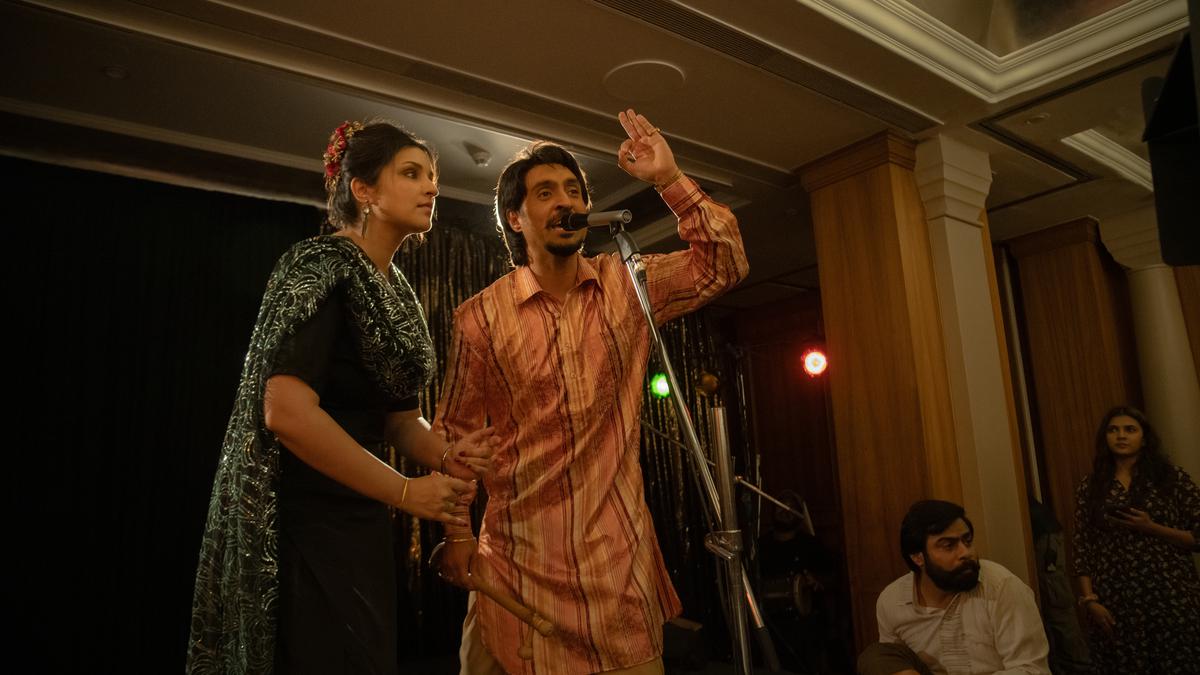
Caste and cinema: The long shadow of Amar Singh Chamkila
The Hindu
Ahead of the release of the popular Punjabi singer’s biopic, a look at how Chamkila’s ethnic identity informed his art
Amidst the ongoing debate on whether maestro A.R. Rahman and ace director Imtiaz Ali have justified the earthy flavour and emotional flux of Amar Singh Chamkila’s music in the upcoming biopic of the phenomenal Punjabi singer, the discussion about the role of Chamkila’s ethnic identity in shaping his art has resurfaced.
A section on social media has questioned Diljit Dosanjhfor removing the turban to play Chamkila, a Dalit Sikh. They remind the artist who normalised a turbaned hero in Hindi cinema for turning back on his statement where he promised not to lose his turban for a film role.
Those who believe in cinematic dharma, however, feel that the actor has done the right thing by keeping his look as close to the character as possible. The previous attempts to capture the artist’s journey, one of which featured Diljit in a turban (Jodi, 2023), were fictionalised accounts because the makers didn’t have the rights to film Chamkila’s biopic.
Actors adopting and removing the religious and social symbols of their characters are quite common in Hindi cinema. In the past, we have seen Aamir Khan sporting a vermillion tika and the sacred thread in Ketan Mehta’s Mangal Pandey: The Rising and Paresh Rawal performed namaz as a devout Muslim mechanic Hashmatullah in Amit Rai’s Road To Sangam. Way back in 1936, Devika Rani, the biggest star of the time, played an untouchable in Franz Osten’s Achhut Kanya. In Ali Abbas Zafar’s Jogi (2022), Diljit cuts his hair on-screen to depict the plight of Sikhs during the anti-Sikh riots in Delhi. Nobody objected. So, has it something to do with Diljit’s previous statement or is it about him playing a Ravidasia Sikh?
Like most absorbing narratives, Chamkila’s story allows for multiple endings. His assassination at the age of 27 along with his singer-wife Amarjot Kaur and his two associates evoked multiple conspiracy theories. Was he eliminated by the separatists who felt he was polluting the minds of the young generation with his obscene songs? Was he killed by his rivals, who felt threatened by his numero uno status in the Punjabi music industry? Or did he pay the price for marrying a Jatt Sikh girl who moved out of her first marriage to pursue her singing career?
In all three possibilities, the role of his caste identity, a Dalit’s control over resources, can’t be denied. Were his songs seen as the other’s reflection on the ways of a socially influential class, going through a process of purification in the 1980s? In all three possibilities, the role of his caste identity, a Dalit’s control over resources, can’t be denied. Were his songs seen as the other’s reflection on the ways of a socially influential class, going through a process of purification in the 1980s? Not even an FIR was registered in the case. Around the same time, two Leftist poets, Jaimal Singh Padda and Arvinder Singh Sandhu Pash, were also killed for speaking for the rights of workers at a time when religious extremism was on a high. A decade ago, Anurag Kashyap was actively considering making a film on Pash with Irrfan but it could not materialise.
Recently, a noted filmmaker from the region told this journalist that though Guru Gobind Singh asked his followers to submerge their caste identities into neutral surnames like Singh and Kaur, flaunting caste surnames is an everyday reality in Punjab. “We know there are still gurudwaras with two entrances and in many villages, there is a clear demarcation between upper caste and Dalit households,” he said.













